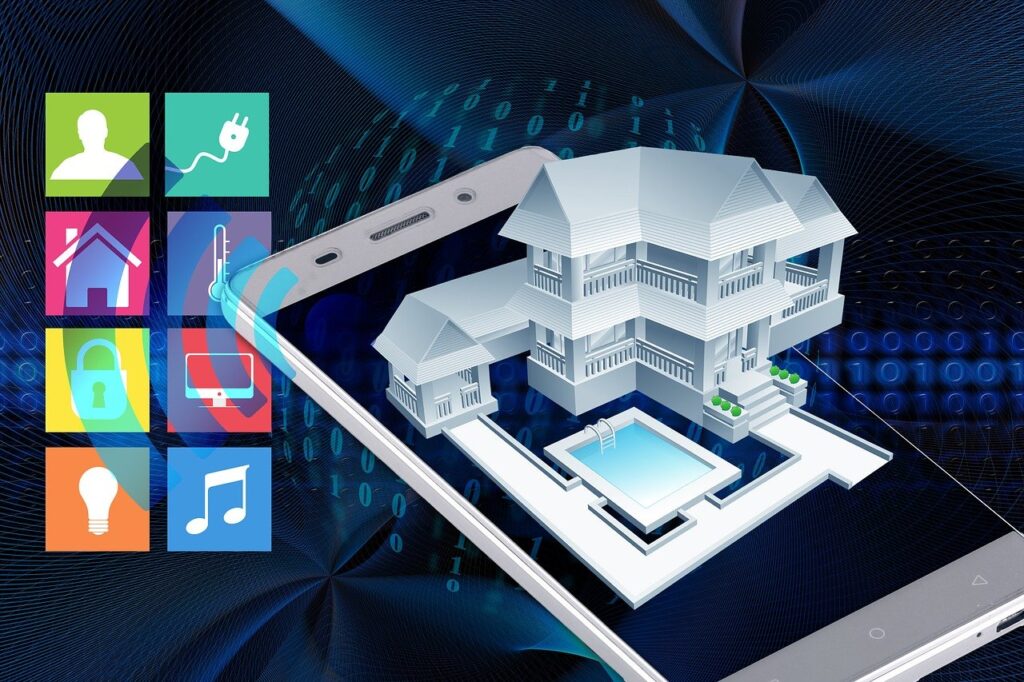Home automation has transformed our homes into smart spaces, allowing us to control various aspects of our daily lives with just a click or a voice command. From lighting to security, smart homes have evolved to offer unprecedented comfort and convenience. However, technology doesn’t stop there. An emerging focus known as “emotional home automation” is starting to gain traction, promising to take smart home personalization to a whole new level. This trend centers on how smart devices can influence and improve our emotional and mental well-being by adapting to our emotions and creating environments that foster a positive mood.
The Connection Between Environment and Emotion
It’s no secret that our surroundings can significantly impact our mood. Light, color, sound, and even temperature can affect how we feel. Emotional home automation leverages this connection, using advanced technology to adjust these factors in ways that positively influence our well-being. Imagine coming home after a stressful day at work, and your home automatically adjusts the lighting to a warm and inviting tone, plays soothing music, and sets the temperature to a comfortable level. All this would be done based on your emotions and needs at that moment.
Emotional Home Automation: Emotional Recognition Technology
At the heart of emotional home automation lies emotional recognition technology. This technology uses sensors, cameras, and artificial intelligence (AI) algorithms to detect and analyze human emotions. Some applications may use biometric data, such as heart rate, voice tone, or facial expressions, to assess your emotional state. These systems can be integrated into smart devices like mirrors, security cameras, or even voice assistants, allowing your home to “sense” how you’re feeling and respond accordingly.
For example, a smart mirror could analyze your face in the morning and detect signs of fatigue or stress. Based on this information, it could recommend a skincare routine or adjust the room’s lighting to a softer level, reducing visual strain. In another case, a security camera might detect a change in your voice tone indicating anxiety and activate a relaxing music playlist in the living room.
Dynamic Personalization of the Environment
Emotional home automation not only detects your emotions but also dynamically adjusts your home environment to improve them. Lighting is a key area where this technology can make a significant difference. Both natural and artificial light have a proven effect on our mood. Bright, cool lights can help us focus, while warm, dim lights can help us relax. With emotional home automation, your home’s lighting can automatically adjust based on the time of day and your emotional state. If you’re feeling down, the system might gradually increase the brightness and switch to more vibrant colors to lift your spirits.
Temperature is another important aspect. Emotional home automation can adjust heating or cooling to maintain an optimal comfort level that matches your emotions. If you’re feeling anxious or stressed, the system might slightly lower the temperature to create a cooler, more relaxing atmosphere.
Sound and Aromatherapy in Emotional Home Automation
Sound also plays a crucial role in emotional home automation. Music has immense power to alter our mood, and smart homes can use this to their advantage. Based on emotional recognition, your home can select and play music that helps you relax, focus, or energize. It could even adjust the volume and placement of the sound to create an immersive experience that fully envelops you.
In addition to sound, aromatherapy is another powerful tool that can be integrated into emotional home automation. Smart diffusers can release specific scents known to positively affect mood. For example, lavender is known for its relaxing properties, while citrus scents can be invigorating. A home equipped with emotional home automation could automatically adjust the scents released into the environment to help you maintain emotional balance.
The Importance of Sleep in Emotional Home Automation
Sleep is a vital component of emotional and mental well-being. Lack of sleep or poor quality rest can exacerbate stress, anxiety, and other emotional issues. Emotional home automation can also play a role here by creating an ideal environment for restorative sleep. Lights can gradually dim as bedtime approaches, mimicking a natural sunset to signal your body to wind down. Sound systems can play white noise or nature sounds to facilitate falling asleep. Even the room temperature can be automatically adjusted to maintain a cool, comfortable climate conducive to rest.
Emotional Home Automation and Mental Health
Emotional home automation is not just about enhancing daily well-being; it also has the potential to be a tool in managing mental health. Advanced systems could, for example, identify early signs of depression or anxiety and suggest actions or routines to counteract them. They could connect with wellness apps to guide you through breathing exercises, meditation, or even remind you to take breaks if they detect prolonged periods of work without rest.
Moreover, these systems can support individuals with chronic mental health conditions by providing a more stable and predictable environment. They could learn from your behavior patterns and anticipate your needs before you realize them, creating a sense of security and comfort in your own home.
Real-World Examples of Emotional Home Automation
Although emotional home automation is an emerging trend, there are already real-world examples of how this technology is being implemented. Companies like Philips Hue have developed lighting systems that sync with music or movies to create immersive experiences that also affect mood. Other companies are experimenting with smart mirrors that offer wellness tips based on facial analysis.
Startups are developing aroma diffusers connected to voice assistants like Amazon Alexa or Google Home, allowing users to control scents in their homes with simple voice commands or automatically based on the time of day or their activities. These advancements are just the beginning of what emotional home automation could become in the future.


